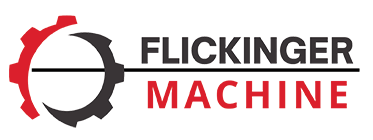Hydraulic Equipment Repairs for the Oil and Gas Industry
The oil and gas industry relies heavily on hydraulic equipment to maintain pipelines and keep their operations going. Common equipment used includes:
These hydraulic tools are needed to keep your pipeline operations moving smoothly, but as reliable as they are, they require consistent maintenance. Some basic, but essential, hydraulic equipment repairs and maintenance routines will keep your hydraulic torque wrenches, flange spreaders, cylinders and jacks productive in the field.
Hydraulic Torque Wrench Maintenance for Oil and Gas Pipelines
Hydraulic torque wrenches are used for heavy duty fastening and bolting applications and are therefore responsible for applying extreme amounts of force. To ensure they do so efficiently and safely, the following maintenance routines are highly recommended:
- Perform regular visual inspections – Prior to operation, it’s a good idea to check for any signs of hydraulic leaks on the torque wrench’s body and around the oil inlet and outlet as contamination can build up here. Pressurize the system prior to operation to verify that there are no leaks.
- Tighten all hardware as necessary – The torque wrench’s swivel head is secured to the wrench body with screws that may come loose during repeated operation and stressing. Make sure this hardware is tightened prior to fastening operations.
- Clean and lubricate all important components – Contamination is a serious and ongoing threat to all hydraulic systems, including hydraulic torque systems. To keep your hydraulic torque wrenches in reliable condition, use a mild solvent to clean the wrench body, housing guard, drive shaft, ratchet lever pin and assembly, button assembly, drive shaft and compression springs. Following a clean down, lubricate bearing surfaces like the wrench body’s side plates, square drive, drive shoe and button assembly.
To thoroughly clean and lubricate all of the above, operators will need to open up the wrench body to access the components inside. This must be done with care and precision to avoid introducing contaminants into the system. If your operators aren’t comfortable cracking open their hydraulic torque wrench, a hydraulic equipment expert can provide detailed, in-depth maintenance.
Hydraulic Flange Spreader Maintenance for Oil and Gas Pipelines
Hydraulic flange spreaders are responsible for providing the spreading force needed to open flanges and allow maintenance teams to access both flange faces. Some flange spreaders are built with jaws while others are collet spreaders that are threaded into the flange’s bolt holes.
Collet spreaders are more common in the oil and gas industry, given their ability to access extremely tight spaces and provide enough spreading force. Here Is how to maintain them:
- Inspect the spreader following operation – After use, check the hydraulic spreader’s arms and connections. Any dents, scoring, pitting or cracks are indications that your equipment needs maintenance.
- Torque all hardware – Operation stresses the hydraulic spreader’s fastening hardware, which can affect how the spreader aligns on the bolt holes. Torque this fastening hardware occasionally to ensure it remains stable during use.
- Pressurizing and monitoring the spreader – The best way to ensure your hydraulic spreader is functioning properly is to pressurize it and note how it behaves. If there are any hydraulic fluid leaks or if the spreader doesn’t smoothly apply force to its maximum rated capacity, repairs may be necessary.
Hydraulic Cylinder and Jack Maintenance for the Oil and Gas Industry
Hydraulic cylinders and jacks give maintenance crews additional access to oil and gas pipelines. They are also susceptible to failures without consistent preventative maintenance that includes the following:
- Inspecting the system for any leaks – Hydraulic fluid leaks are most likely to emerge on the hydraulic cylinder’s body, its connections, around the hydraulic hose connections, on the hydraulic pump’s body or around the pump’s drive shaft. Leaks can introduce contaminants, so pinpoint the source if hydraulic fluid is pooling anywhere along the system.
- Inspect hydraulic fluid for contamination – If contamination is in your hydraulic fluid, it may have a milky or cloudy appearance that indicates sediment. To identify invisible contamination, take a fluid sample and send it to a lab for analysis.
- Check the seals and replace any that are worn – The hydraulic cylinders seals are common failure points and tend to wear faster than other components. The wiper seal, rod seal and piston seal need extra attention during inspection, as failures here will cause leaks or rapidly introduce contaminants into the system.
- Component replacement – A couple of times every year, the recommendation is to open up the hydraulic cylinder’s body and check all internal components for wear. Any worn components should be replaced. If the same parts are wearing out quickly, over and over, then it’s time to follow up with an expert hydraulic equipment technician.
A Hydraulic Equipment Expert Can Provide Reliable Maintenance for Oil and Gas Companies
Oil and gas companies need their hydraulic torque wrenches, spreaders and cylinders to operate safely, consistently and reliably. The best way to ensure your hydraulic equipment provides these traits is to partner with an experienced hydraulic equipment technician. An expert technician can provide on-time preventative maintenance, rapid repairs, and a deep inventory of replacement parts.
Put it all together and the hydraulic equipment expert advantage is clear: Maximum reliability and minimal downtime for an oil and gas company’s hydraulic equipment.
